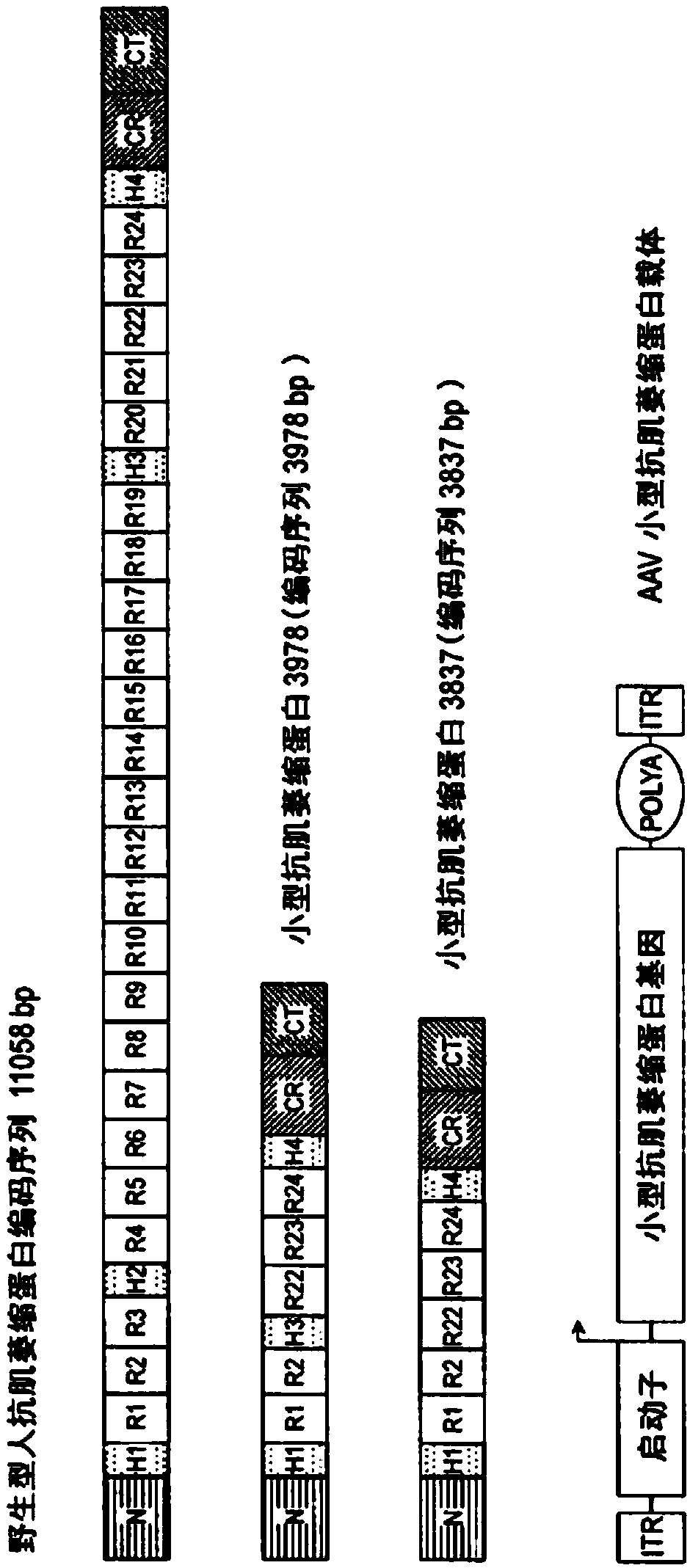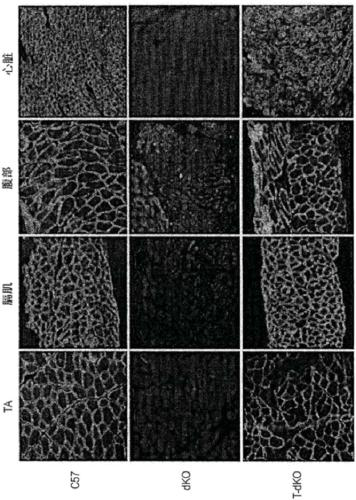Optimized mini-dystrophin genes and expression cassettes and their use
A muscle-atrophic, small-scale technology, applied in gene therapy, peptide/protein components, chemical instruments and methods, etc., can solve the problem of DMD patients being helpful
- Summary
- Abstract
- Description
- Claims
- Application Information
AI Technical Summary
Problems solved by technology
Method used
Image
Examples
Embodiment 1
[0416] Synthesis of codon-optimized human small dystrophin gene
[0417] We previously generated small versions of many human dystrophin genes by PCR cloning of human muscle dystrophin cDNA, resulting in a C with a large deletion in the central rod domain and an almost complete deletion of the dystrophin coding sequence. Small dystrophin gene in the terminal region (Wang et al., Proc. Natl. Acad. Sci., USA 97:13714 (2000); US Patent Nos. 7,001,761 and 7,510,867). These small dystrophin genes were tested to be highly functional in vivo in the DMD mdx mouse model (Watchko et al., Human Gene Therapy 13:1451 (2002)). One of these small dystrophic proteins, named Δ3990, is described in US Patent No. 7,510,867 as SEQ ID NO:6. The protein sequence of Δ3990 and the DNA encoding it are provided herein as SEQ ID NO:27 and SEQ ID NO:28, respectively.
[0418] Modifications to the Δ3990 mini-dystrophin were also designed, codon optimized and tested for activity. The new small human dys...
Embodiment 2
[0433] CMV-Hopti-Dys3978 in dystrophin / dystrophin-related protein double knockout mice
[0434] Loss of dystrophin in Duchenne muscular dystrophy (DMD) patients leads to devastating skeletal muscle degeneration and cardiomyopathy. Mdx mice lacking only dystrophin have a milder phenotype, whereas double knockout (dKO) mice lacking both dystrophin and its cognate dystrophin-related protein exhibit the clinical symptoms similar to those of severe malnutrition. It has been previously demonstrated that with 3 × 10 11 Intraperitoneal injection of vg / mouse AAV1-CMV-Δ3990 (not codon-optimized) into neonatal homozygous dKO mice partially restored growth, function and extended lifespan by several months (50% survival at 22 weeks rate) (see from Wang et al., J.Orthop.Res, 27:421 (2009) Figure 6B ). Here, AAV9 was used as a capsid to assess the therapeutic effect of systemic delivery of the human codon-optimized Hopti-Dys3978 gene. The results showed that the AAV9-CMV-Hopti-Dys3978 ...
Embodiment 3
[0443] hCK-Hopti-Dys3978 in mdx mice
[0444] To examine whether the hybrid synthetic muscle-specific promoter hCK could effectively drive Dys3978 gene expression, this promoter was compared to the same construct driven by a non-specific CMV strong promoter. Immunofluorescent staining of small dystrophin expression in mdx mice following tail vein injection of the corresponding vectors revealed that both promoters, hCK and CMV, delivered equal expression levels in muscle and heart ( Figure 10 ).
PUM
| Property | Measurement | Unit |
|---|---|---|
| molecular weight | aaaaa | aaaaa |
| molecular weight | aaaaa | aaaaa |
| diameter | aaaaa | aaaaa |
Abstract
Description
Claims
Application Information
 Login to View More
Login to View More - R&D
- Intellectual Property
- Life Sciences
- Materials
- Tech Scout
- Unparalleled Data Quality
- Higher Quality Content
- 60% Fewer Hallucinations
Browse by: Latest US Patents, China's latest patents, Technical Efficacy Thesaurus, Application Domain, Technology Topic, Popular Technical Reports.
© 2025 PatSnap. All rights reserved.Legal|Privacy policy|Modern Slavery Act Transparency Statement|Sitemap|About US| Contact US: help@patsnap.com



